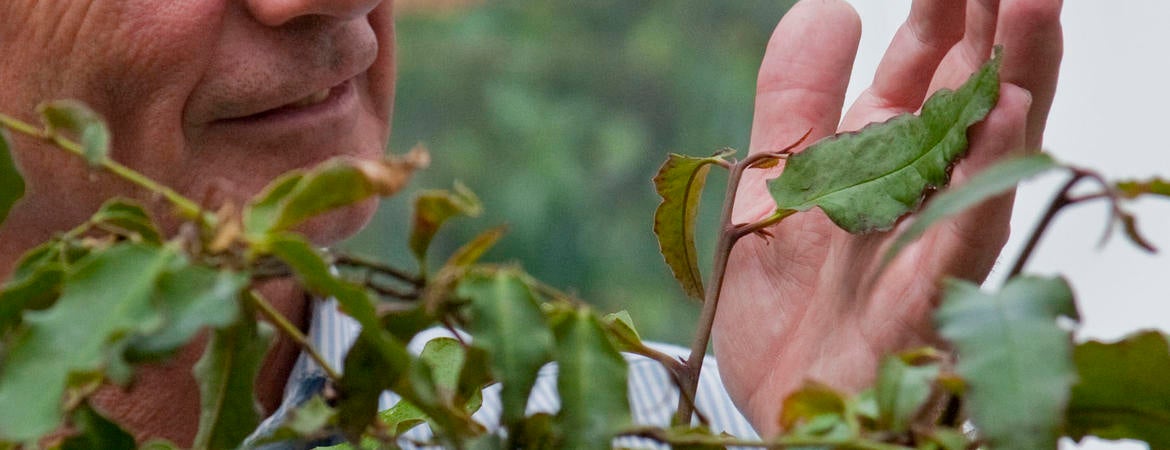
IIGB researchers are members of an international team — the Amborella Genome Sequencing Project — that has sequenced the genome of the Amborella plant. The genome sequence sheds new light on the origin of flowering plants, including all major food crop species.
Susan Wessler, a distinguished professor of genetics, led the IIGB team of members on the project. Study results appear in the 20 December 2013 issue of the journal Science. The research paper includes a full description of the analyses performed by the project, as well as implications for flowering plant research.
Amborella (Amborella trichopoda) is unique as the sole survivor of an ancient evolutionary lineage that traces back to the last common ancestor of all flowering plants. The plant is a small understory tree found only on the main island of New Caledonia in the South Pacific. An effort to decipher the Amborella genome — led by scientists at Penn State University, the University at Buffalo, the University of Florida, the University of Georgia, and UC Riverside — is uncovering evidence for the evolutionary processes that paved the way for the amazing diversity of the more than 300,000 flowering plant species we enjoy today.
Scientists who sequenced the Amborella genome say that it provides conclusive evidence that the ancestor of all flowering plants, including Amborella, evolved following a “genome doubling event” that occurred about 200 million years ago. Some duplicated genes were lost over time but others took on new functions, including contributions to the development of floral organs. Comparative analyses of the Amborella genome are already providing scientists with a new perspective on the genetic origins of important traits in all flowering plants — including all major food crop species.
The complete genome sequence of Amborella has been deposited in Genbank — the U.S. National Institutes of Health database of publicly available gene sequences — and also is available in the Amborella Genome Database.
Read related article here.